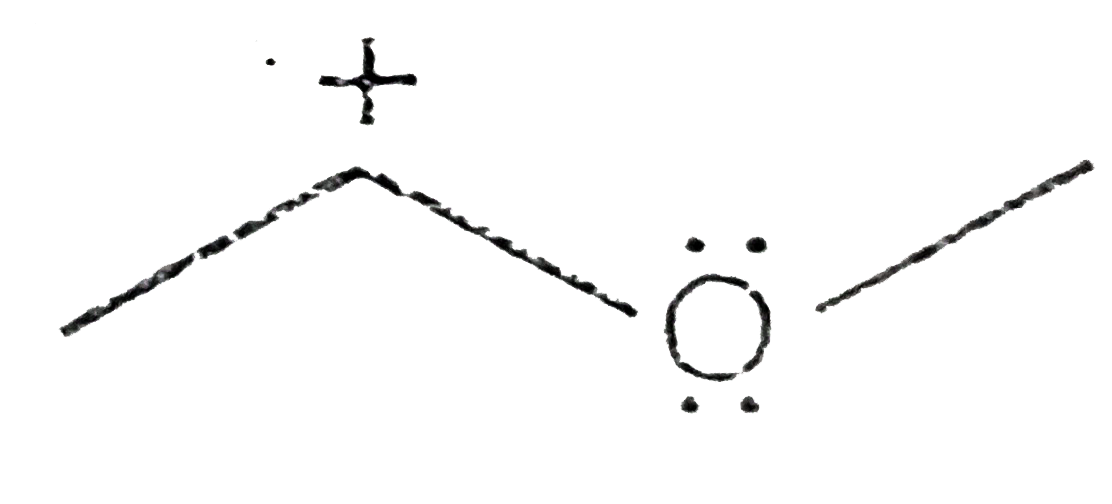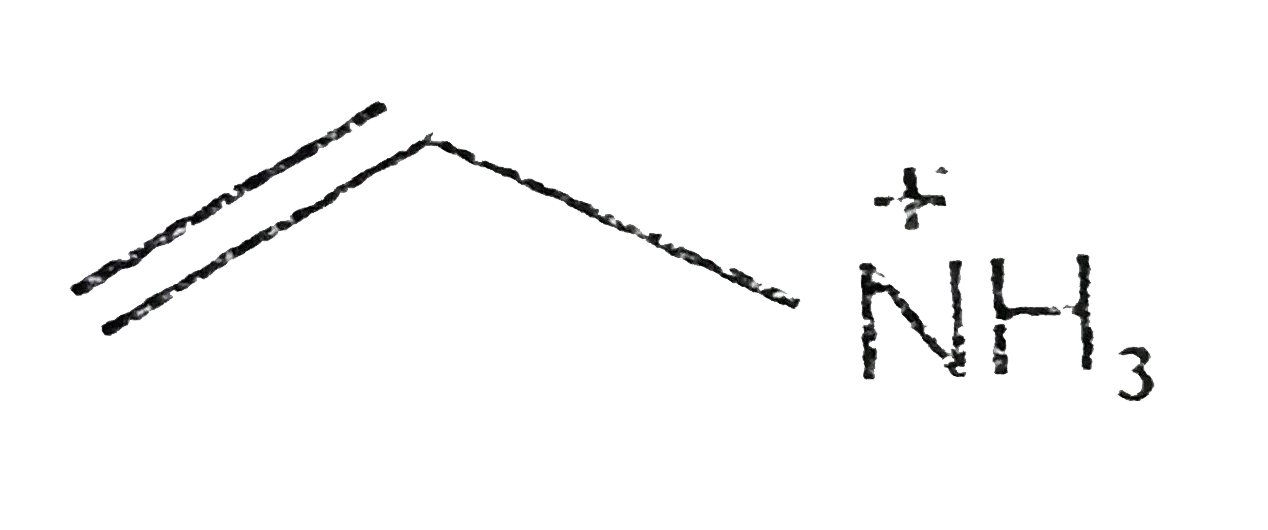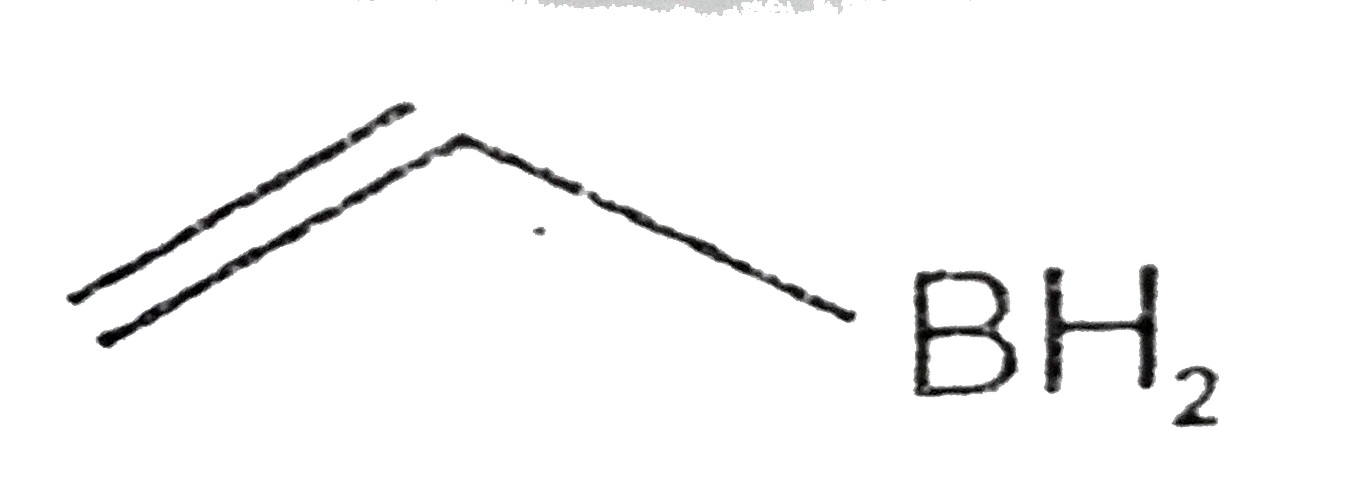Resonance is not possible in




The correct Answer is:B
To determine which compound does not exhibit resonance, we can analyze the given options step by step.
Step 1: Identify the Compounds
We need to analyze the compounds given in the options. Let's denote them as:
- Option 1: Compound with a positive charge and an oxygen with a lone pair.
- Option 2: NH3 with a positive charge on nitrogen.
- Option 3: NO2.
- Option 4: BH2 with a double bond.
Step 2: Analyze Option 1
For the first compound, we have a positive charge and a lone pair on oxygen. The oxygen can donate its lone pair to form a double bond with the adjacent atom, leading to resonance structures. Therefore, resonance is possible in this compound.
Hint: Look for lone pairs and charges that can participate in resonance.
Step 3: Analyze Option 2
In the second option, we have NH3 with a positive charge on nitrogen. Here, nitrogen has four bonds (three with hydrogen and one with a positive charge). Since nitrogen cannot exceed four bonds, there is no possibility of forming a resonance structure. Thus, resonance is not possible in this compound.
Hint: Remember that elements like nitrogen cannot exceed their maximum bonding capacity.
Step 4: Analyze Option 3
In the third option, we have NO2. This compound can exhibit resonance because the double bond between nitrogen and one oxygen can shift, allowing for the formation of different resonance structures. Therefore, resonance is possible in this compound.
Hint: Check for the ability to shift double bonds and lone pairs to create alternative structures.
Step 5: Analyze Option 4
For the fourth option, we have BH2 with a double bond. Boron can accept an electron pair and can form multiple bonds. Therefore, resonance structures can also be formed in this case.
Hint: Consider the ability of elements like boron to form additional bonds due to their electron deficiency.
Conclusion
After analyzing all the options, we find that the compound in Option 2 (NH3 with a positive charge on nitrogen) does not exhibit resonance.
Final Answer
The answer to the question "Resonance is not possible in" is Option 2.
We need to analyze the compounds given in the options. Let's denote them as:
- Option 1: Compound with a positive charge and an oxygen with a lone pair.
- Option 2: NH3 with a positive charge on nitrogen.
- Option 3: NO2.
- Option 4: BH2 with a double bond.
For the first compound, we have a positive charge and a lone pair on oxygen. The oxygen can donate its lone pair to form a double bond with the adjacent atom, leading to resonance structures. Therefore, resonance is possible in this compound.
In the second option, we have NH3 with a positive charge on nitrogen. Here, nitrogen has four bonds (three with hydrogen and one with a positive charge). Since nitrogen cannot exceed four bonds, there is no possibility of forming a resonance structure. Thus, resonance is not possible in this compound.
In the third option, we have NO2. This compound can exhibit resonance because the double bond between nitrogen and one oxygen can shift, allowing for the formation of different resonance structures. Therefore, resonance is possible in this compound.
For the fourth option, we have BH2 with a double bond. Boron can accept an electron pair and can form multiple bonds. Therefore, resonance structures can also be formed in this case.
After analyzing all the options, we find that the compound in Option 2 (NH3 with a positive charge on nitrogen) does not exhibit resonance.
The answer to the question "Resonance is not possible in" is Option 2.
Topper's Solved these Questions
- ORGANIC CHEMISTRY: SOME BASIC PRINCIPLE AND TECHNIQUESBook:AAKASH INSTITUTEChapter:ORGANIC CHEMISTRY: SOME BASIC PRINCIPLE AND TECHNIQUESExercise:SECTION-C OBJECTIVE TYPE QUESTION (MORE THAN ONE OPTIONS ARE CORRECT)
Explore 18 Videos
- ORGANIC CHEMISTRY: SOME BASIC PRINCIPLE AND TECHNIQUESBook:AAKASH INSTITUTEChapter:ORGANIC CHEMISTRY: SOME BASIC PRINCIPLE AND TECHNIQUESExercise:SECTION-D LINKED COMPREHENSION TYPE QUESTIONS
Explore 6 Videos
- ORGANIC CHEMISTRY: SOME BASIC PRINCIPLE AND TECHNIQUESBook:AAKASH INSTITUTEChapter:ORGANIC CHEMISTRY: SOME BASIC PRINCIPLE AND TECHNIQUESExercise:ASSIGNMENT SECTION-A COMPETITION LEVEL QUESTIONS
Explore 50 Videos
- ORGANIC CHEMISTRY : SOME BASIC PRINCIPLES AND TECHNIQUES Book:AAKASH INSTITUTEChapter:ORGANIC CHEMISTRY : SOME BASIC PRINCIPLES AND TECHNIQUES Exercise:Assignment(Section-D)(Assertion - Reason Type Questions)
Explore 12 Videos
- POLYMERSBook:AAKASH INSTITUTEChapter:POLYMERSExercise:ASSIGNMENT (SECTION-D)
Explore 13 Videos
Similar Questions
Knowledge Check
In which of the following resonance is not possible ?
ACH2=C=CH2BCH2=C=CHΘCCH2=C=CH⊕DCH2=C=CH⋅STATEMENT-1 : In Cr2O−27 bond length of all Cr-O bond is equal
and
STATEMENT-2: Cr2O−27 , resonance is possible.AStatement-1 is True , Statement-2 is True , Statement-2 is a correct explanation for Statement-1BStatement-1 is True , Statement-2 is True , Statement-2 is NOT a correct explanation for Statement-1CStatement-1 is True , Statement-2 is FalseDStatement-1 is False , Statement-2 is TrueStatement-1: In CO2 molecule resonance is possible.
Statement-2: CO is used in purification of Ni.
Statement-3: H2CO3 is more acidic than H2SiO3.ATTTBTFTCFFTDFTF
The number of no bond resonance structures possible for but - 1 -ene and a 3∘ carbocation having methyl, ethyl and isobutyl groups on cationic carbon respectively are
View Solution|| Resonance ||
View Solution|| Resonance ||
View SolutionWhich is not possible resonance form for N−3?
View SolutionIn resonance
View Solution